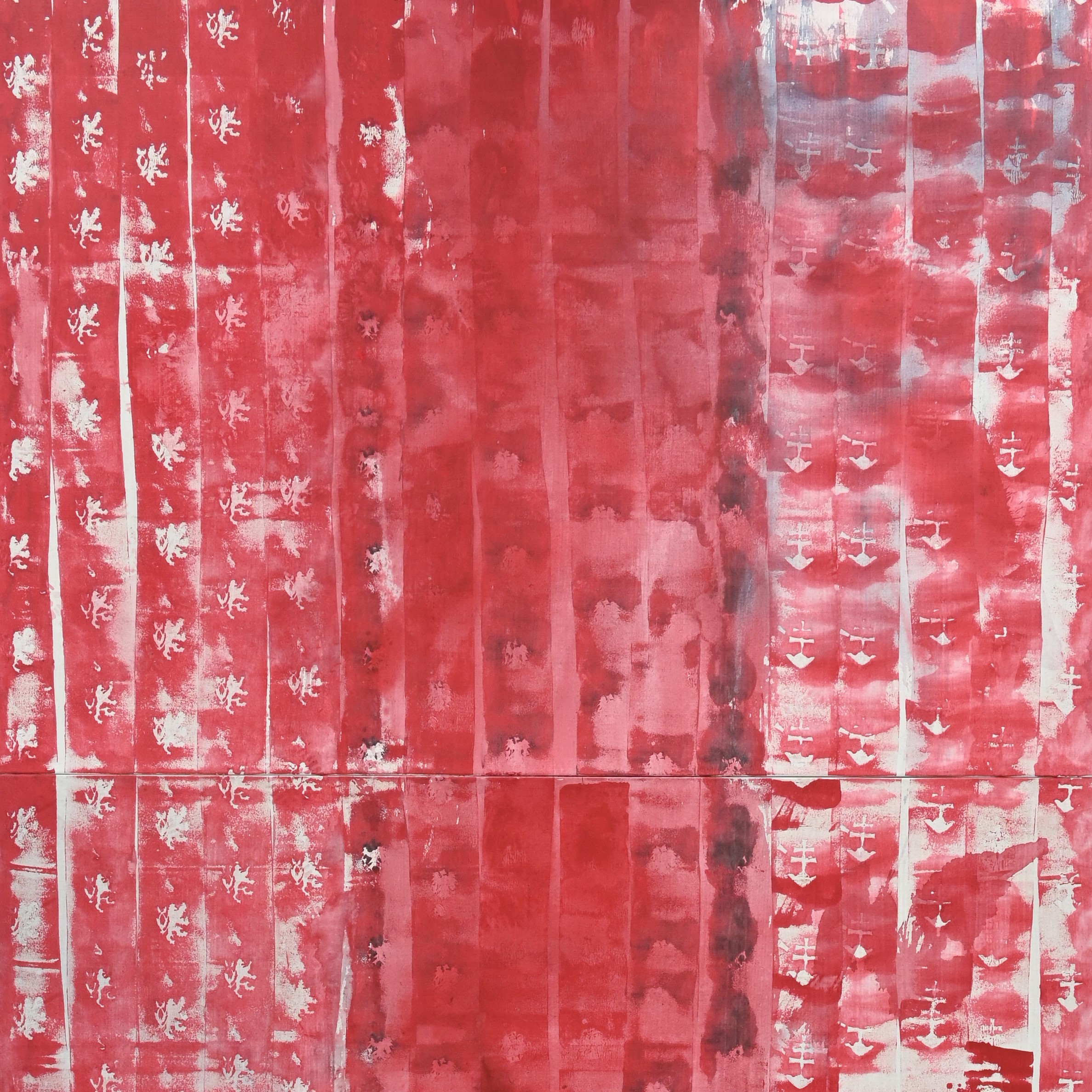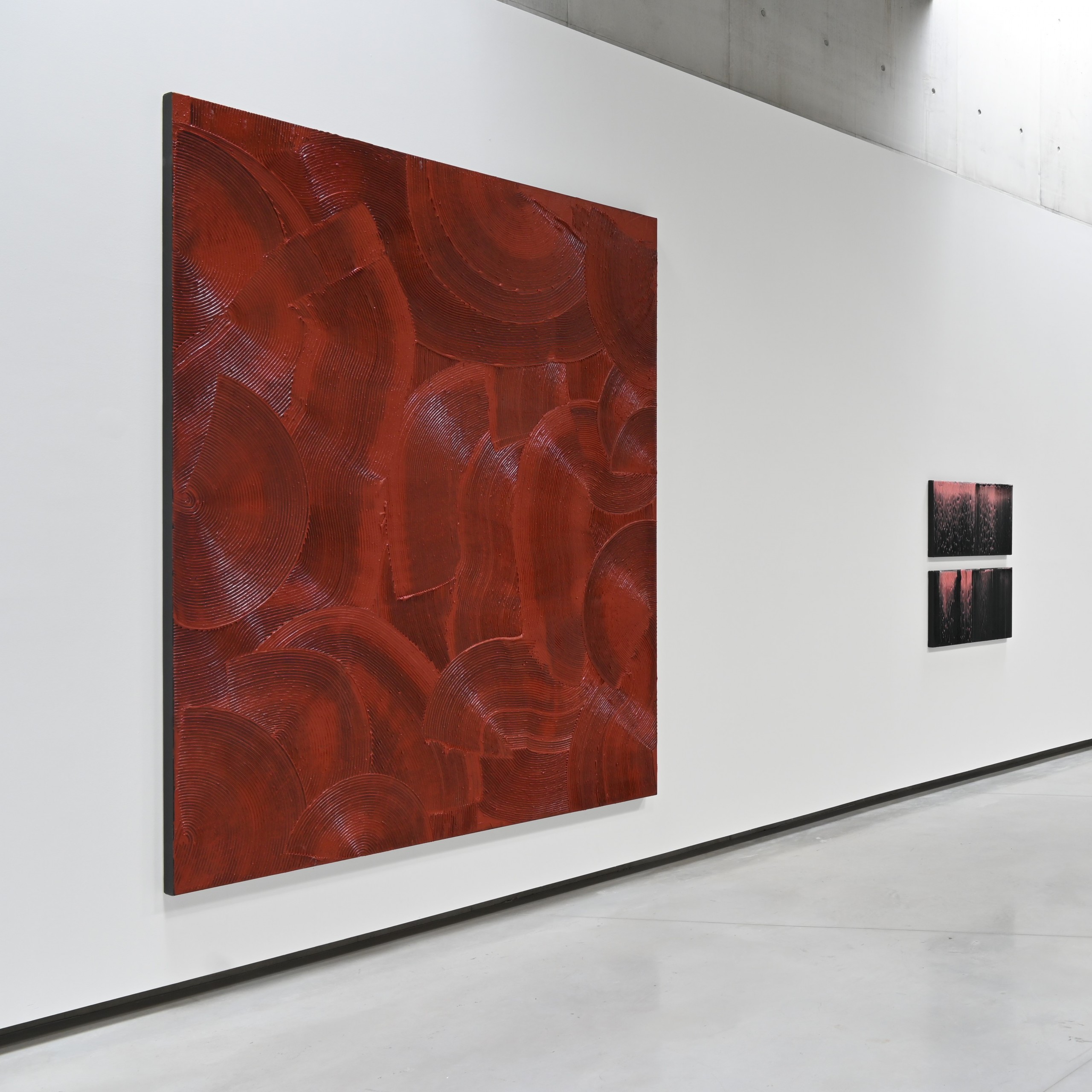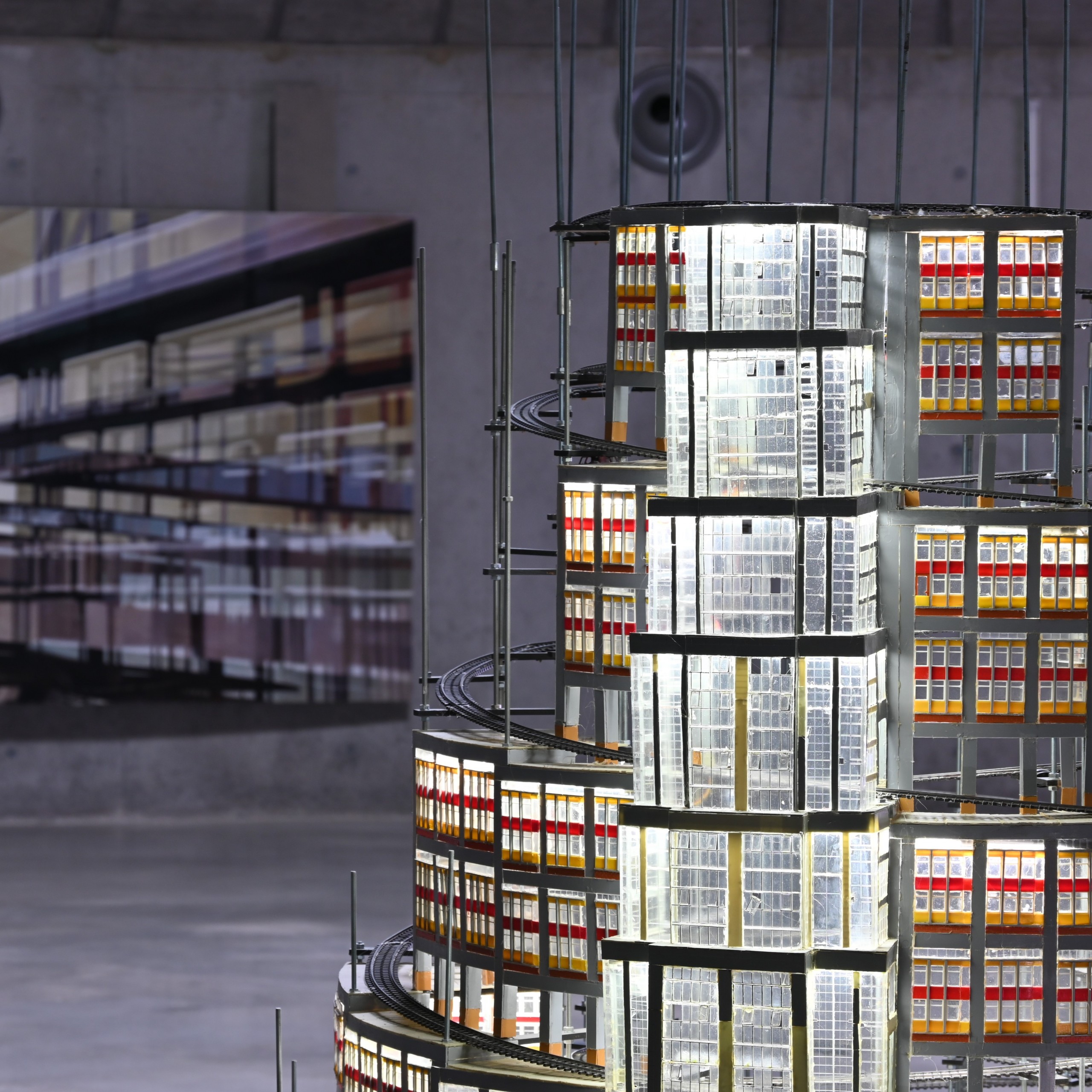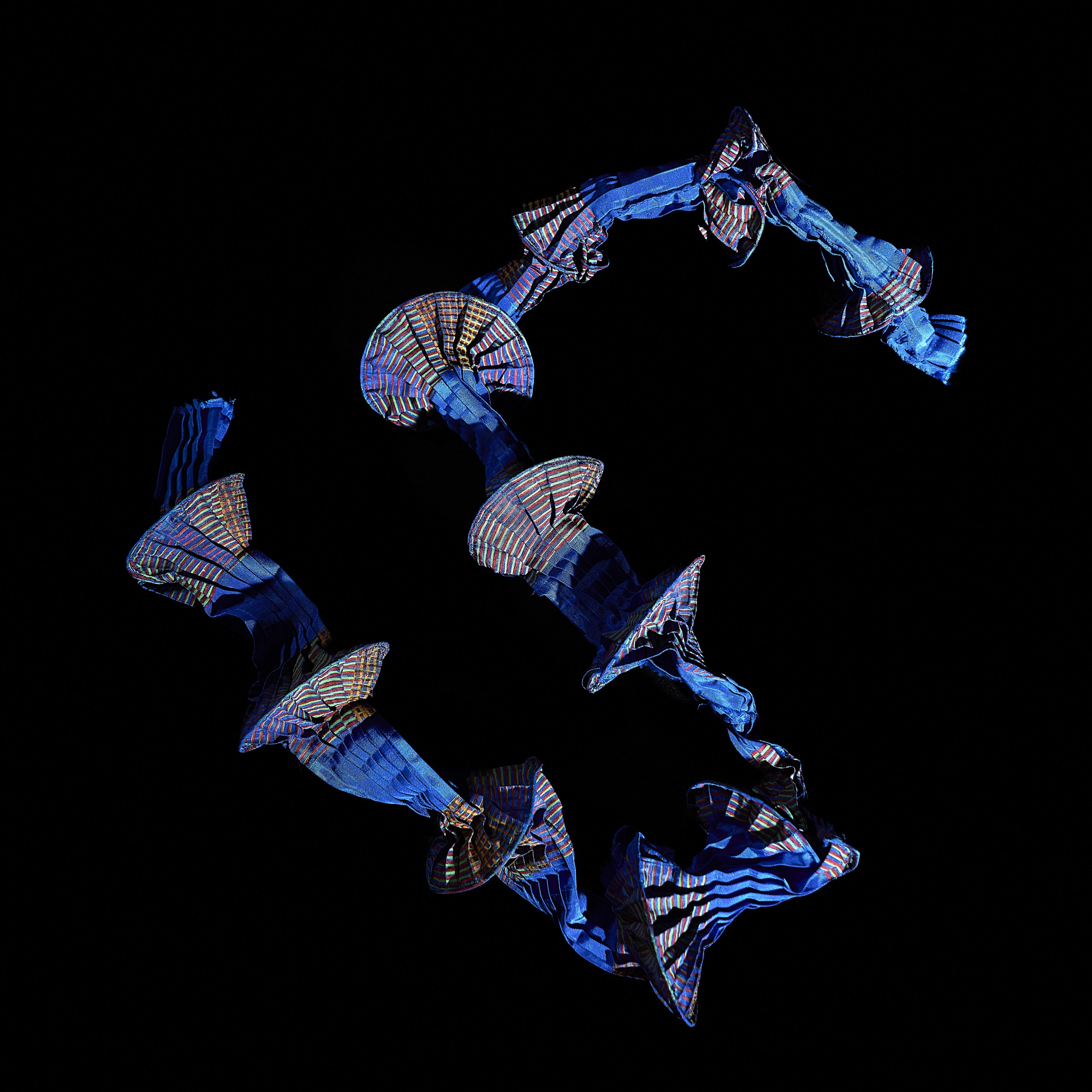Exhibitions 2025
Main exhibition
TERRA INCOGNITA - Art Expedition to an Unknown Neighbouring Country
Czechoslovak Art between 1948 and 1989 in Dialogue with the Liaunig
Collection
27 April-31 October 2025
The main exhibition TERRA INCOGNITA - Art Expedition to an Unknown Neighbouring Country, curated by Miroslav Haľák, presents Czechoslovak art in dialogue with works from the Liaunig Collection. The curator limits himself to the years 1948 to 1989, which represent the phase of the division of Europe, in which Austria and Czechoslovakia found themselves in two different spheres of influence and the mutual exchange in the previously so organically grown socio-cultural neighbourhood was radically interrupted.
Since the parameters of art development in the two countries were shaped according to very different criteria and the artists had to work with sometimes completely different socio-political challenges, but were always located in a historically compact geographical sphere, the exhibition is divided into so-called "territories" that correspond to the variability and individual specifics of art production in these decades. Based on the tendencies towards figuration, abstraction, geometrisation and pluralisation typical of postmodernism, the respective artists from Austria and Czechoslovakia come together in a staged dialogue in which the concrete phenomena that developed in the four decades of the Cold War are presented.
The extensive exhibition project was made possible in co-operation with Czech and Slovakian institutions and private collections.
The exhibition features works by the following artists: Milan Adamčiak, Marc Adrian, Jiří Balcar, Juraj Bartusz, Mária Bartuszová, Josef Bauer, Štefan Belohradský, Jiří Bielecki, Hans Bischoffshausen, Vladimír Boudník, Hellmut Bruch, Miloslav Chlupáč, Miloslav Cicvárek, Jarmila Čihánková, Miroslav Cipár, Jiří David, Hugo Demartini, Milan Dobeš, Jiří Georg Dokoupil, Otto Eder, Libor Fára, Rudolf Fila, Stano Filko, Emil Filla, Herbert Flois, František Foltýn, Johann Fruhmann, Michal Gabriel, Roland Goeschl, Franz Grabmayr, Mira Haberernová-Trančíková, Josef Hampl, Jiří Hilmar, Rudolf Hoflehner, Wolfgang Hollegha, František Hudeček, Friedensreich Hundertwasser (Friedrich Stowasser), Josef Istler, Othmar Jaindl, Jozef Jankovič, Čestmír Janošek, Jiří John, H+H Joos (Harold Joos, Hildegard Joos), Martha Jungwirth, Zdeněk Kirchner, Alojz Klimo, Tamara Klimová, Alfred Klinkan, Eva Kmentová, Milan Knížák, Jan Koblasa, Peter Kogler, Jiří Kolář, Stanislav Kolíbal, Július Koller, Jan Kotík, Jiří Kovanda, Viera Krajcová, Radoslav Kratina, Matej Krén, Richard Kriesche, Rudolf Krivoš, Jan Kubíček, Jaroslava Kurandová, Bohdan Lacina, Aleš Lamr, Maria Lassnig, Mariane Maderna, Gottfried Mairwöger, Antonín Málek, Karel Malich, Pavel Maňka, Mikuláš Medek, Juraj Meliš, Jürgen Messensee, Anastázia Miertušová, Josef Mikl, Vladislav Mirvald, Alexander Mlynárčik, Gerhardt Moswitzer, Jiří Načeradský, Rudolf Němec, Karel Nepraš, Pavel Nešleha, Hermann Nitsch, Franz Xaver Ölzant, Peter Oriešek, Marek Ormandík, Hermann J. Painitz, Milan Paštéka, Helga Philipp, Robert Piesen, Josef Pillhofer, Peter Pongratz, Markus Prachensky, Drago j. Prelog, Hannes Priesch, Arnulf Rainer, Erwin Reiter, Franz Ringel, Michael Rittstein, Gerwald Rockenschaub, Hubert Schmalix, Christian Schwarzwald, Zbyněk Sekal, Miloš Ševčík, Agneša Sigetová, Rudolf Sikora, Natálie Šimanová, Adriena Šimotová, Paulína Skavová, Otakar Slavík, Miroslav Šnajdr st., Soshana (Susanne Schüller), Jiří Sozanský, Jakub Špaňhel, Hans Staudacher, František Štorek, Jan Švankmajer, Ján Švec, Zdeněk Sýkora, Laco Teren, Erwin Thorn, Margita Titlová-Ylovsky, Jorrit Tornquist, Miloš Urbásek, Andreas Urteil, Jiří Valenta, Jitka Válová, Aleš Veselý, Jaroslav Vožniak, Max Weiler, Hana Wichterlová, Jan Wojnar, Erwin Wurm, Jana Želibská, Kamila Ženatá und Olbram Zoubek.
The exhibition is accompanied by a richly illustrated catalogue.
Main exhibition TERRA INCOGNITA
Curator: Miroslav Haľák
27 April to 31 October 2025
Wednesday to Sunday from 10 am to 6 pm

We would like to thank the lenders and cooperation partners for their collaboration on the exhibition project.
Alšova jihočeská galerie / South Bohemian Gallery
Vilma Cipárová
COLLETT Prague | Munich
Estate of Stano Filko
GASK - Galerie Středočeského kraje / Central Bohemian Gallery
Mira Haberernová Trančíková
Collection Veronika Jančárová and Ivan Jančár
Linea Collection
Matak Collection
Marek Ormandík
Our Collection Roman Pilíšek
Robert Runták Collection
Natália Šimonová
Jakub Špaňhel
We would also like to thank the private lenders who do not wish to be named.
Co-operation partner:
Special exhibition
GASTEIGER
POST-RADICAL-PAINTING
27 April–27 July 2025
Jakob Gasteiger, born in Salzburg in 1953, is one of the exceptional figures of Austrian post-war art.
His art is analytical, eschewing all representationalism and the pathetic expressionist gestures of his generation of artists. His works move between painting, flat relief and object. Arranged horizontally as a series or combined into a multi-part tableau, these painted objects add up to a sound and rhythm of unique musicality.
Gasteiger examines the fundamental elements of the picture: the colour and its texture, the size of the object, its format and proportion, even the significance of the depth of the stretcher frame for the effect of the picture. No recognisable motif or theme, no meaningful content or narrative should distract from these elements that define a picture.
The artist rarely deviated from monochrome in his work, although the early black and other achromatic colours were later replaced by green, blue and even a seductive pink.
Gasteiger's brush is the simple squeegee, which he makes individually for each individual picture object from thick cardboard: with a narrow or wide, shallow or deep tooth cut. The squeegee is Gasteiger's rake, with which he combs the colour mass. Outwardly, this is reminiscent of meditative Zen gardens.
However, Gasteiger is averse to any symbolism. Even his disc paintings do not live from the analogy that the Italian Renaissance drew between the ideal round form of the tondo and heavenly harmony. On the contrary, Gasteiger goes against the power of the centre and its symbolism directed towards the centre. He emphasises the sovereignty of his colour lines, their independence from the outer form of the circle. The sharp ridges and furrows collide with the strict outline of the disc.
The artist is interested in the autonomous rhythm of the traces of colour that his squeegee leaves behind in the pigment: whether they flow slowly or bump into each other violently and short of breath; whether they are tamed by a right-angled organisation or overlap and intersect in vehemently drawn segmental arcs.
Gasteiger enriches the monochrome pigment with glass or copper, iron oxide or sand. He makes it appear viscous like oil or dry and brittle, fragile or as if made of soft dough, dull or shiny, warm or cold.
These pictorial objects not only want to be seen with the eyes, they want to be felt in order to sense their rhythm, their weight and their inner monumentality. Rarely has art, with its strict formalism and the power of reduction, confronted the viewer more strongly with himself and his pure perception.
Klaus Albrecht Schröder
On the occasion of the exhibition, Artbook Verlag is publishing a richly illustrated catalogue with a text by Klaus Albrecht Schröder.
Special exhibition GASTEIGER - POST-RADICAL-PAINTING
Curator: Klaus Albrecht Schröder
27 April to 27 July 2025
Wednesday to Sunday from 10 am to 6 pm

Sculpture depot
Clemens Fürtler
BILDMASCHINEN
27 April–31 October 2025
Bildmaschinen, which translates as "Image Machines," has been Clemens Fürtler's blanket term for his art and most of his shows for many years. It’s a designation that opens up a broad field of meaning. At first, most people will not take it to refer to sculptural objects that consist of technological and constructive components and are evocative of industrial-age settings. We see his Turm zu Babel / Tower of Babylon (2018), its structural frame rising far beyond the part that has already been completed in architectural terms, suggesting that its vertical development is potentially infinite. We see seemingly endless, towering high-rise buildings lining a street, hybrid architectures comprising parking garages, race tracks (Bildmaschine 02, 04, 06), and railroad tracks (01). All of these are models that serve as symbols and sketches of the Sisyphean machinery of the modern metropolitan world, which supposedly propels itself forward and yet repeats itself, over and over, in an endless cycle.
These civilization machines render the modern world as a deserted, soulless, technoid apparatus that, in its perpetual motion mode, can develop neither feelings nor the distance necessary to reflect on itself. It is trapped in itself, self-content, a system caught in a continuous loop. This interpretation of modern society makes Clemens Fürtler a kindred spirit of his US artist colleague Chris Burden (1946–2015), who created comparable works from about 2000 onwards. They included models of technology-related structures from the industrial age, such as bridges, perhaps most famously his more than twenty-meter-high Skyscraper at Rockefeller Center (2008), as well as Metropolis II, a complex installation with speeding model cars at the Los Angeles County Museum (2011).
However, the machine that is content with itself only accounts for part of what Fürtler’s image machines represent and convey. A machine is not primarily an end in itself, but is designed to create and produce something. Fürtler’s works are thus not merely machinery, but devices that produce images. And not just pictures in the mind in the form of associations, but real depictions, as well. Their moving parts, such as cars and trains, are equipped with headlights and in some cases cameras. Lighting elements are integrated into the architectural elements, too, creating both static and dynamic light and shadow effects on the surrounding walls while moving images from the cameras are projected on to them. The effect is all the more powerful as Fürtler always plunges the exhibition rooms into darkness, bringing the play of light and shadow into sharp relief.
Fürtler’s staging of light thus results in a transformation process from three-dimensional objects to a two-dimensional play of light and moving images on a surface, which is to say, from a real object to an image. His Bildmaschinen are thus devices that transform objects into images.
Fürtler then goes on to present works that take this transformation process one step further. He translates light and shadow effects into works of art and independent objects in their own right. They comprise photograms created through direct exposure on photographic paper, Polaroids, moving images, and, finally, paintings on canvas. His exhibitions bring all of these different manifestations together: the object itself; its imprint of light or shadows in real time in the same room; the photomechanical imprint of light in a photogram or photographic image; cinematic images; and, finally, the handmade and subjectively produced image of the object in the form of paintings. Fürtler takes us on a journey through different forms of experience and manifestations of reality. In the end, the artist and his work merge into a single complex image machine that produces objects and pictures, transforming them permanently and simultaneously into other states of aggregation.
Reinhard Spieler
A richly illustrated catalogue with texts by Günther Dankl, Michaela Seiser, Ludwig Seyfarth, Reinhard Spieler, Michael Stoeber and Thomas D. Trummer will be published by Verlag Bibliothek der Provinz to accompany the exhibition.
Sculpture depot Clemens Fürtler - BILDMASCHINEN
27 April to 31 October 2025
Wednesday to Sunday from 10 am to 6 pm

Graphics wing
Ursi Fürtler. Avec plissé
27 April–31 Ocotober 2025
"I just had to do it that way," says Ursi Fürtler in the context of the impossibility of being recognised as a female artist in Austria in the 1970s, as she lays out samples of printed textiles on the worktable in her screen printing workshop. Contrary to her original wish to become a painter, she decided in favour of textiles as her basic material due to the male-dominated professional field in the 1970s and 1980s. It was probably precisely because of this situation that the young artist perfected her field so intensively and made her voice heard through her conviction that this was exactly what she wanted to do.
Fürtler has worked all her life. In 2025, the creator of the unique oeuvre of textile works and versatile exceptional phenomenon will have her first solo museum exhibition in Neuhaus, providing an insight into almost seventy years of work. The aim of the presentation, entitled Avec plissé, is to create a cross-section of her artistic oeuvre, which continues to this day like a red thread without breaks or breaks. The derivation of "Avec plaisir" (With pleasure!) draws attention to Fürtler's favourite material in recent years: pleated fabric.
Works on paper and design sketches through to the continuation and rearrangement in collages
The presentation in the graphics wing of Museum Liaunig begins with drawings on paper. These are surface compositions in high-contrast colour combinations that Fürtler produced from 1972 to the 1980s, mostly as sample designs for the textile industry. The drawings were executed with remarkable lightness and obviously caused a sensation forty years ago. Above all, they speak of a self-confident artist who most probably stirred up the environment of the time with her skills and her flair for colours and shapes. The artist's structured style, which later became increasingly minimalist, is striking. She uses the simplest of compositions to create an image that fascinates the viewer.
The screen printing process and unpredictability
Parallel to her design drawings, Ursi Fürtler began printing on fabrics using the screen printing process in the early 1980s. Unlike many of her fellow artists, who chose screen printing as a convenient technique for standardising an edition and for reproducing and realising large editions, Ursi Fürtler was attracted by a completely different aspect of this printing process. For her, it is the incalculable, the result that can never be completely planned due to the technique.
With the screen printing technique, which Ursi Fürtler taught herself, she is never concerned with perfection, but rather with the results that can be achieved through her own creativity.
"I see my love of screen printing as an adventure and my curiosity is endless," she wrote in a commentary on her work in the 1990s.
Three screens are exhibited in the second room of the graphics wing, along with sketches of their colours and structure. Also on display are accessories and textile objects from a period of forty years, three dresses and a scarf, several versions of which Fürtler brought with her on a trip abroad in 2005 as a state gift from Federal President Heinz Fischer.
The declination of possibilities
The staging of Ursi Fürtler's objects in the Museum Liaunig is intended to illustrate how many possibilities of forms underlie them. A couturier needs a body to which he adapts his fashion. His transformed fabrics complement the female or male body, they support, conceal or make visible. Ursi Fürtler's work starts with the material itself and turns each fabric into a unique piece that speaks for itself. Fürtler's scarves, dresses and accessories can be worn, but at the same time result in completely independent three-dimensional objects, as shown in the installations arranged in Museum Liaunig.
Alexandra Grimmer
A richly illustrated catalogue with texts by Tulga Beyerle, Carola Dertnig, Ursi Fürtler, Alexandra Grimmer, Leander Kaiser, Martina Kandeler-Fritsch and Herbert Lachmayer will be published by Verlag Bibliothek der Provinz to accompany the exhibition.
Graphics wing Ursi Fürtler. Avec plissé
Curator: Alexandra Grimmer
27 April to 31 October 2025
Wednesday to Sunday from 10 am to 6 pm

